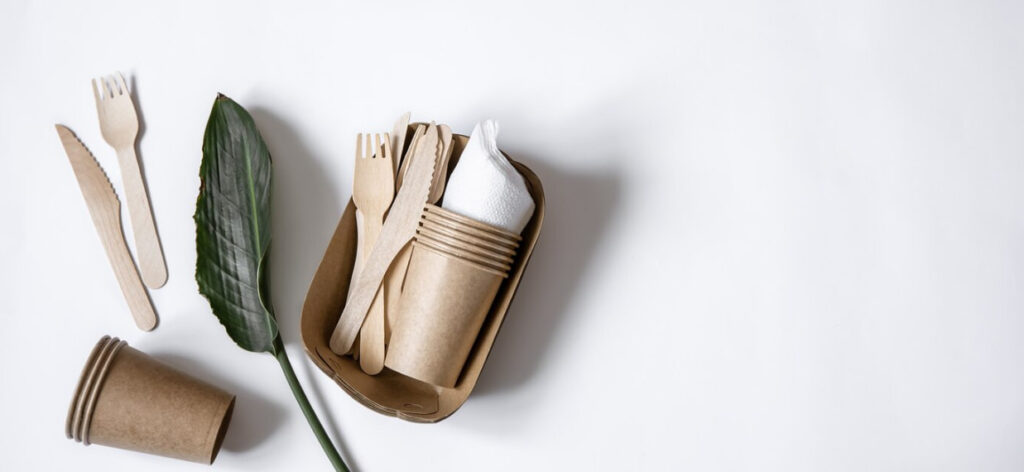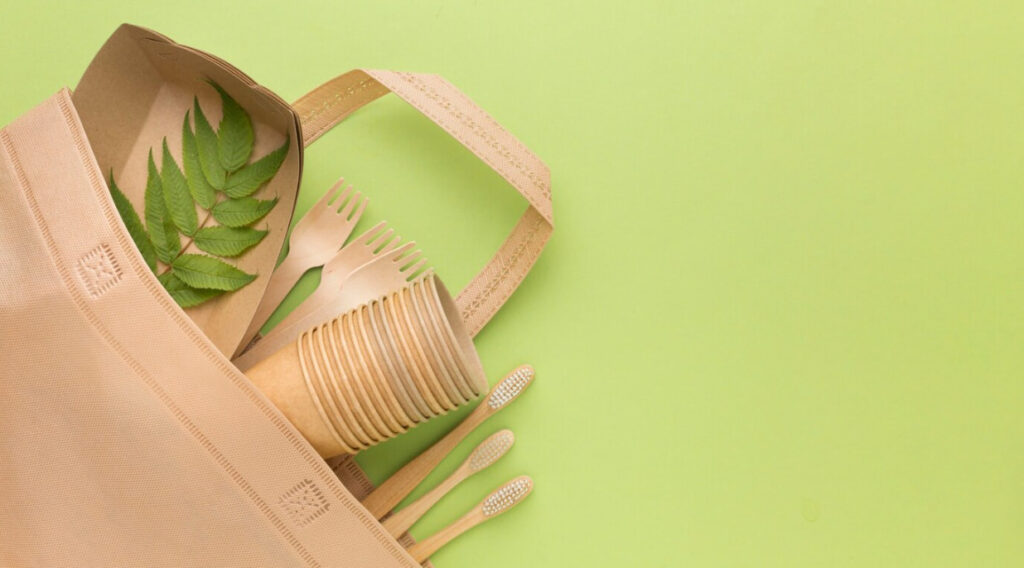In an era where environmental consciousness is paramount, the significance of eco-friendly packaging takes center stage. The traditional approach to packaging, often characterized by excessive use of plastic and non-biodegradable materials, is undergoing a transformative shift towards sustainability.
Packaging with a Purpose: The Eco-Friendly Revolution
Eco-friendly packaging encompasses a wide range of packaging materials designed to minimize their impact on the environment. Such packaging materials are carefully chosen to be environmentally conscious, ensuring they do not harm the ecosystem in any way.
To qualify as eco-friendly, packaging materials should possess certain attributes. They should either be easily biodegradable and capable of composting, or they should be reusable and readily recyclable when they reach the end of their life cycle. Typically, eco-friendly packaging materials are derived from natural sources and are non-toxic to the environment and all living organisms.
The adoption of eco-friendly packaging serves the crucial purpose of preventing the accumulation of packaging waste over time, which can otherwise have detrimental effects on the environment.
In recent years, many forward-thinking companies have embraced eco-friendly packaging materials as part of their commitment to environmental sustainability. By making this switch, they have made significant contributions to safeguarding the environment and protecting wildlife habitats.
For instance, a simple illustration of eco-friendly packaging includes materials like paper bags or cardboard boxes, which align with eco-conscious principles, while single-use plastics are examples of packaging materials that fall short of being eco-friendly due to their environmental impact. The adoption of eco-friendly packaging reflects a growing awareness of the importance of responsible packaging choices in mitigating environmental harm and promoting a healthier planet for future generations.
The Urgency of Eco-Friendly Packaging
In our modern world, packaging is an integral part of our daily lives, encompassing everything from food and cosmetics to decorations and everyday items. However, this convenience comes at a cost—excessive packaging waste. While we may focus on the products themselves, it’s often the packaging that contributes significantly to our environmental challenges.
Most packaging materials end up in landfills, open incinerators, or even dumped into the ocean. Regardless of their fate, if these materials are non-biodegradable and non-recyclable, they contribute to environmental pollution, releasing potentially harmful chemicals into the air, water, land, and soil.
This pollution and toxicity not only harm the environment and its inhabitants but also pose a direct threat to human health. Here are some eye-opening facts that underscore the urgent need for eco-friendly packaging solutions:
- 10 Million Tonnes of Ocean Plastic: Every year, a staggering 10 million tonnes of plastic find their way into our oceans worldwide, wreaking havoc on marine ecosystems;
- 380 Million Tonnes of Single-Use Plastic: A mind-boggling 380 million tonnes of plastic are produced annually, primarily for single-use purposes, contributing to the growing plastic waste crisis;
- Less Than 9% Recycled: Shockingly, less than 9% of the plastic produced each year is recycled, leaving the vast majority to accumulate as waste;
- Limited Plastic Recycling: Those who engage in plastic recycling often limit their efforts to specific types of plastics, leaving a substantial portion unrecycled;
- Oceans vs. Fish: The Ellen MacArthur Foundation predicts that, by 2050, there will be more plastic in our oceans than fish, highlighting the dire need for change;
- Plastic’s Toll on Wildlife: Over a million animals succumb to plastic pollution every year, with sea turtles being particularly affected by the ingestion of plastic waste;
- Centuries to Degrade: Non-biodegradable plastic materials like styrofoam, cello tape, plastic, and bubble wrap can take over 400 years to degrade, perpetuating their environmental impact for generations.
In the face of these alarming statistics, the adoption of eco-friendly packaging has become not just a preference but an imperative. It represents a sustainable solution to combat the growing environmental crisis, offering hope for a cleaner and healthier future.
Impact of Conventional Plastic-Based Packaging
When we consider traditional packaging materials, our minds often conjure images of items like Styrofoam balls, foam sheets, bubble wrap, single-use plastic wraps, and plastic containers. While these materials offer convenience, reusing, recycling, or breaking them down is often impractical.
The accumulation of millions of tons of such waste in the environment does not decompose; instead, it persists, wreaking havoc on natural resources, ecosystems, and the environment at large. Beyond their unsightly appearance, these conventional packaging materials can also release toxic gases or chemicals when they interact with natural environmental elements or pollutants.
To compound the issue, animals residing in these environments may inadvertently ingest these packaging materials, leading to fatalities as their digestive systems cannot process these non-biodegradable items.
Moreover, packaging items like Styrofoam and plastic are lightweight, occupying a considerable amount of space per unit mass. Consequently, they are frequently incinerated to reduce volume and facilitate disposal. However, burning these synthetically produced polymers poses a significant environmental threat, releasing toxic and sometimes poisonous fumes that harm both living organisms and their surroundings.
The repercussions extend beyond wildlife and ecosystems; non-biodegradable waste has also been known to accumulate at the mouths of streams, causing flooding and even altering the course of waterways. In summary, conventional packaging exerts a hazardous impact on the environment.
Advantages of Sustainable Packaging

Sustainable packaging offers numerous environmental benefits that contribute to a healthier planet:
- Reducing the Carbon Footprint: Sustainable packaging minimizes resource consumption, effectively lowering the carbon footprint associated with production and disposal;
- Resource Reuse and Recycling: Materials used in eco-friendly packaging are often reused, recycled, or repurposed to enrich soil when used as compost;
- Wildlife Conservation: Eco-friendly packaging plays a crucial role in protecting endangered animal species affected by human activities;
- Human Well-being: Recent studies have detected microplastics in human bloodstream, highlighting the direct impact of plastic pollution on human health. Eco-friendly packaging aims to mitigate this risk by reducing the use of non-biodegradable and toxic materials;
- Allergy Prevention: By avoiding the development and seepage of toxic substances into packaged products, sustainable packaging helps prevent allergic reactions;
- Soil Enrichment: Composting biodegradable materials in landfills enhances soil quality by fostering the growth of beneficial worms and insects through vermicomposting;
- Sustainable Production: The production of eco-friendly packaging materials consumes less energy and water, resulting in a more environmentally friendly manufacturing process;
- Environmental Well-being: Sustainable packaging supports the overall health of the environment, benefiting the flora, fauna, and human populations that rely on it. Synthetic materials released into the environment can have detrimental effects, making sustainable options vital for a healthier planet.
Friendly Packaging Materials: A Wide Range of Options
Packaging materials are an essential part of our modern world, ensuring that products are transported and stored in optimal conditions. While the environmental impact of conventional packaging materials like Styrofoam, thermocol, and plastic has raised concerns, there is a growing array of eco-friendly alternatives that can revolutionize the way we pack and protect our goods. These materials not only safeguard our planet but also offer various advantages:
- Biodegradable Packing Peanuts: Unlike traditional Styrofoam packing peanuts, biodegradable versions are made from materials like mushroom films. They provide excellent protection and can easily degrade, reducing their environmental footprint;
- Corrugated Paper: Replacing bubble wrap, corrugated paper serves as an eco-friendly shock absorber. It can be reused, recycled, or composted, making it a sustainable choice;
- Glassine: Resembling plastic but made from recyclable, glossy wood pulp, glassine offers an environmentally conscious packaging option;
- Cellulose Packaging: Derived from natural polymers found in plants, cellulose is water and moisture-resistant. It can be composted or allowed to degrade, making it ideal for food packaging;
- Cornstarch: Cornstarch-based packaging materials are non-toxic and easily decomposable, providing a sustainable alternative for various applications;
- Mushroom-Based Packaging: Mushroom materials are sturdy, shock-absorbent, and biodegradable. They contribute to soil fertility and can even be used to grow more mushrooms for additional packaging material;
- Kraft Paper: Made from wood pulp, kraft paper utilizes all elements of wood, leaving no waste. It is a natural, reusable, and eco-friendly option;
- Straw and Husk: These agricultural byproducts can be used as bioplastics or filling material. They can also be turned into ropes or strings for various purposes, replacing synthetic alternatives;
- Recycled Plastic: Efforts to recycle plastic are ongoing, with recycled plastic being used for various applications such as inflatable air pillows for safe transportation;
- Reusable Bags: Eco-friendly bags made from plant fibers like cotton and jute offer a sustainable alternative to single-use plastic bags. They are durable, aesthetically pleasing, and can be used repeatedly;
- Glass or Aluminum Bottles: Glass and aluminum bottles are environmentally superior to plastic ones. They are neutral, reusable, and infinitely recyclable without losing their integrity, making them a responsible choice for packaging liquids.
The Business Advantages of Eco-Friendly Packaging

If you believe that eco-friendly packaging doesn’t relate to your business and should only be chosen for its environmental benefits, it’s time to reconsider your business approach. Here are some key business insights that demonstrate the advantages of eco-friendly packaging for your company:
- Numerous packaging materials created synthetically are susceptible to fluctuations in temperature, pH levels, and moisture content. Consequently, these materials undergo alterations in their properties, potentially leading to the release of harmful gases or compounds. To guarantee that the food products you deliver maintain their pristine condition, free from any toxicity, it is advisable to opt for eco-friendly packaging materials!;
- Furthermore, eco-friendly packaging businesses can enhance your brand’s reputation in the eyes of your customers. In light of the adverse effects associated with conventional packaging materials, these brands gain a competitive advantage by adopting eco-friendly alternatives, as even the average consumer is now aware of the drawbacks of traditional packaging materials. Simply employing eco-friendly packaging materials will demonstrate to customers that you prioritize environmental concerns and assist in establishing a positive brand image;
- You can reduce your expenses by minimizing the production of single-use packaging materials and directing your efforts towards reusing packaging materials, thereby conserving the resources you invest in;
- The manufacturing process of eco-friendly packaging materials is remarkably straightforward, with most materials utilized in their natural state, eliminating the need for electricity or complex industrial procedures. This not only saves production time but also reduces costs associated with packaging material production;
- Eco-friendly packaging materials require minimal maintenance, providing peace of mind that they won’t have adverse effects on you or the environment;
- When it comes to packaging parcels for delivery, the volume of tape used is staggering. Many delivered packages are enveloped in tape, akin to an Egyptian mummy’s wrapping! However, this tape is typically not reusable and contributes significantly to plastic waste. A viable alternative is the use of paper tape, which is equally effective at securing items but can be easily recycled or composted, effectively mitigating waste accumulation and pollution;
- Paper wrapping is the preferred choice of packaging material suitable for showcasing your business, regardless of your industry. You can personalize paper wraps with your company’s logos or eye-catching patterns to captivate your customers. The advantage of paper wraps lies in their recyclability, allowing for repeated use and establishing an eco-friendly, low-waste packaging approach.
Conclusion
With a staggering one-third of total waste stemming from packaging materials, it is imperative for businesses to explore environmentally friendly alternatives in their packaging practices. Regardless of a company’s size, each individual shares a collective responsibility to ensure that their actions do not harm the environment. Earth, our cherished home, is dependent on our stewardship of its resources, and safeguarding them is essential for the well-being of future generations. In the face of daily reports highlighting the adverse impacts of synthetic materials on our environment, it is high time that we make conscientious choices for our businesses, our health, and the very planet we call home. You might be interested in: